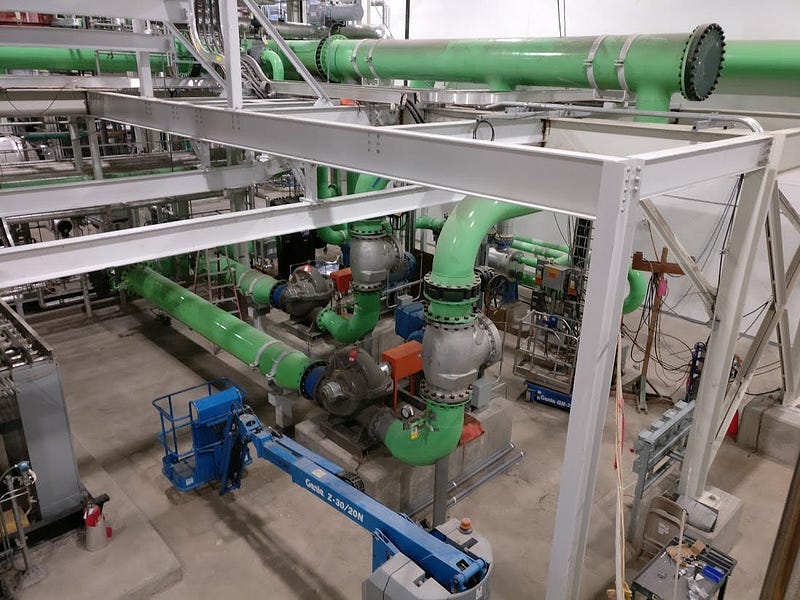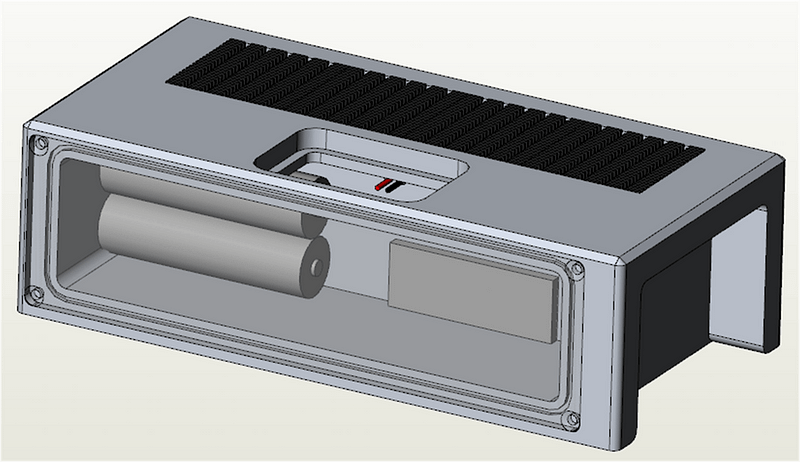Holland, Michigan's Intelligent Snowmelt System
Holland, Michigan's Intelligent Snowmelt System
- Last Updated: December 2, 2024
Guest Writer
- Last Updated: December 2, 2024



Holland, Michigan, a town just off the eastern shore of Lake Michigan sees a lot of snow. But instead of relying on a network of snowplows, salting, and shovels, Holland diverts waste heat from a nearby power plant to run under the streets and sidewalks to melt the snow with a smart snowmelt system.
The Holland BPW snowmelt system takes waste heat from power generation and captures it to heat water, which circulates through 190 miles of tubing laying underneath the town. Pumping 4,700 gallons of water per minute at 95ºF, the system melts an inch of snow per hour. The system continues to expand, now covering over 5 miles of sidewalk and roadway.
Taking the Snowmelt System Online
Holland’s snowmelt system is incredibly effective, but with major strides in IoT capability, as well as its accessibility and affordability, the benefits of taking the Holland snowmelt system online are clear.

One of the issues Holland faces is knowing how well the system is working. They can physically see whether the system was working or not (did the snow melt?), but lack the quantitative surface data to truly understand how well the system is performing throughout different areas of the city. Questions include:
- Are we supplying enough heat to melt the snow?
- Are we wasting energy by putting too much heat into the system?
- How should we run the system pumps?
It was clear — Holland needed to be able to monitor performance in realtime and make informed decisions based on that data.
Realtime Snowmelt Monitoring System
The result was a snowmelt monitoring system that is placed on sidewalks and streets across the deployment area. The system is composed of small metal boxes chained to lamp posts or trees (and more recently, in IoT connected bricks embedded directly into the sidewalk) near the area they wanted to measure.

The monitor measures two key indicators:
- Ground temperature
- Surface wetness
The monitor collects the data, and streams its readings in realtime where it can be displayed, analyzed, and processed by snowmelt administrators.
Technology Used
For a full walkthrough on how it was made, check out Pete Hoffswell’s award-winning tutorial on hackster.io (more on that in a bit). But here’s the technology used in a nutshell:
- AT&T IoT Starter Kit: LTE, integrates with Flow and M2X, works with tons of plug-in sensors
- PubNub: streams data from sensors to application in realtime, and sending a Tweet for certain conditions.
- EON: framework for visualizing the streaming IoT data
- SeeedStudio Grove Starter Kit: prototyping
- Rain/snow sensor
- Weatherproof temperature sensor
What’s Next
The project was made by Pete Hoffswell, from the Holland Board of Public Works, and just won the grand prize for the Realtime AT&T IoT Starter Kit Challenge. As for what’s next, per Pete’s words:
Our local Board of Public Works, who manages the snowmelt system, is very interested in this project. I’ve started working with BPW engineers to move from this proof-of-concept prototype to a version that would be ready for regular use. We are thinking of building the system right into one or two bricks!

Smart Sensor Brick Prototype
The project is proceeding nicely to a phase two prototyping process. We have brought mechanical engineers with the power plant into the project to work out further detail as to what the sensor might look like fully installed. Here’s a mock-up drawing of the sensor, with batteries and thermo-electric power production. Pretty awesome!
Written by Joe Hanson of PubNub.
The Most Comprehensive IoT Newsletter for Enterprises
Showcasing the highest-quality content, resources, news, and insights from the world of the Internet of Things. Subscribe to remain informed and up-to-date.
New Podcast Episode

What is Hybrid Connectivity for IoT?
Related Articles





